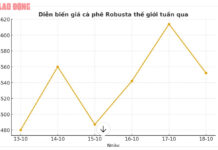What is a savings book?
According to Clause 1, Article 7 of Circular No. 48/2018/TT-NHNN, a savings book is a certificate confirming the ownership rights of a customer’s savings deposit at a bank or credit institution.
A savings book can be issued in the name of one person, two people, or multiple people (in case of joint savings). To withdraw money from the savings account, the account holder must either personally perform the withdrawal procedure or authorize a representative to do so through a power of attorney or estate distribution.
Can a wife withdraw money from a savings account in her husband’s name?
There are two scenarios regarding a savings account in the husband’s name:
The savings book is the joint property of the couple
If the savings book is considered joint property, the wife must provide evidence to support this claim.
According to Article 33 of the Law on Marriage and Family 2014, joint property includes assets acquired during the marriage, jointly gifted or inherited assets, or assets that the couple agrees to own jointly.
To withdraw money from the savings account in her husband’s name, the wife must provide documents proving joint ownership, such as a notarized agreement stating that the savings book is joint property.
Even with proof of joint ownership, the wife can only withdraw up to 50% of the funds in the savings account. To withdraw the entire amount, the wife would need to obtain authorization from her husband or have him accompany her to the bank for the withdrawal.

(Illustrative image)
The savings book is the husband’s separate property
Article 3 of the Law on Marriage and Family stipulates that separate property of the husband or wife includes assets formed before marriage, assets acquired through separate gifts or inheritance, or assets divided from joint property during the marriage. Separate property is under the ownership and disposal of the individual.
Therefore, if the savings book is the husband’s separate property, the wife does not have the right to withdraw money from this savings account.
The wife can only withdraw money from the savings account, which is her husband’s separate property, in the following cases:
– The husband authorizes the wife : The wife can withdraw money from the savings account if her husband authorizes her to perform banking transactions. In this case, the wife must provide relevant documents, such as the power of attorney, savings book, identification documents of the account holder (ID card, CCCD, passport), and identification of the authorized person.
– Through inheritance : The wife can withdraw money from the savings account, which is her husband’s separate property, if he passes away and leaves a will or if the savings book is part of the estate to be distributed according to the law in the absence of a will.
In this scenario, the wife should bring the savings book, agreement/declaration of inheritance, identification documents of the co-heirs, death certificate of her husband, and proof of their marital relationship to complete the withdrawal procedure.
Can a Wife Claim Her Husband’s Secret Investments?
In the world of online discourse, a heated debate has sparked surrounding a delicate issue: the legality of spouses secretly investing in stocks, purchasing insurance, and the potential consequences in the face of adversity. The question on everyone’s mind is whether these covert actions are lawful and, more importantly, if the hidden funds can be retrieved in times of misfortune. This thought-provoking discussion delves into the intricate balance between personal freedom and marital transparency, leaving many wondering about the legal implications of such secretive financial endeavors.







































